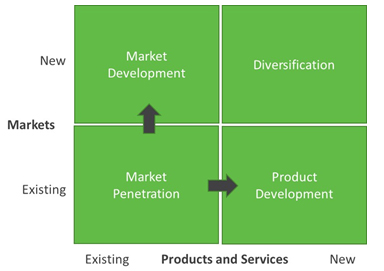In this article, we are going to take you through the four different ways you can grow your NDIS business.
As we get into 2021 and organisations start to go through strategic plan updates and head in to budget season, what levers are you going to pull to have greater social impact and grow your NDIS business?
There are probably a series of questions or ideas going through your mind about where you can grow. Maybe you have tried some growth plans and they didn’t work as planned.
Where are new clients that you can bring to your organisation? What is their financial value? How can you do more for existing clients?
Before you dive in to one of the growth options, you need to firstly:
- Understand your organisation: what locations, services and types of disability are you currently serving?
- Understand your market: what services are in demand in your locations by people living with the types of disability that your organisation is best suited to serve?
For the second point here, the best source of data is to look at the NDIS website. Alternatively, CBB can help you complete a market scan and look for new opportunities.
As you go through this data, think about where your potential new clients are located, what services they need, and the potential financial value of those services. Where is there need and demand in your area for new services, and unmet demand in other areas?
What does the data tell you about the gaps and opportunities? Thinking about where you see opportunities to pursue growth, are there gaps where no or few competitors are presently working?
There is a tool called Ansoff’s Matrix which provides you with the four options of how you can grow your NDIS business. We’ll use this tool to identify the four growth strategies that you can utilise.
As we look at these options, let’s think about a hypothetical provider of occupational therapy services working in Port Augusta with children with intellectual disability, considering options to grow.

1. Market penetration
Market penetration is really just a more complicated way of saying you’ll provide more services to your existing clients.
Within the NDIS, utilisation describes the amount of an NDIS plan that has been used to purchase products/services. Average utilisation rates of NDIS plans across Australia are about 70% – which means that 30% of approved funds are not being spent. These utilisation rates are even lower in regional and remote areas including in Aboriginal communities.
The low utilisation rates reflect an opportunity for organisations to grow revenues – but more importantly, it is a reflection of identified needs (in the NDIS plan budget) which are not being met.
The easiest growth opportunity that many providers have is to provide more services to existing customers.
So, our example occupational therapist could focus on growing more services to the existing children with intellectual disability in Port Augusta.
2. Market development
Market development is about taking your existing services in to new locations or groupings of client (e.g. by type of disability) that are currently not well served.
Analysis of NDIS market data could help you to identify adjacent locations which are attractive markets, or else to consider working with different types of disability where there might be similar needs or skills needed to what you presently do.
In our example, you could develop the market by opening an office and hiring a staff member down the road in Whyalla to provide occupational therapy services to children with intellectual disability there.
3. Product development
Product development is when you identify new services or new types of product, that you can offer to existing customers. Or, put another way, it could involve delivering new services in your existing locations.
Again, the NDIS data – and intelligence you get talking with industry contacts – can help to identify where there might be a market opportunity.
Back to the example, the occupational therapy provider could utilise the product development strategy by expanding services to include different services in Port Augusta. Perhaps you discover that many of your clients also need physiotherapy services. So, you hire a physiotherapist using the same brand, facilities and systems and expand services this way.
4. Diversification
The last growth strategy is by diversification, which is to provide a new product or service in a new market.
For example, our occupational therapist could open a speech pathology service in Port Lincoln. In an example like this, the diversification strategy might not sound like it makes much sense. However, where there are similar capabilities, systems or resources required to deliver a different product/service in a different market, it can make sense.
This tends to be a higher risk and more difficult way to grow than the other three strategies – because you are, in essence, working in an area completely new to the organisation.
Summarising
It might be that you can achieve growth in your services, revenue, and ultimately have a positive impact for more clients through any of these options. Each of them would require that you undertake different activities though.
Providing occupational therapy services to people with other forms of disability in Port Augusta would require understanding the needs of that cohort of people (perhaps requiring some staff professional development), and ensuring you can promote your services to that cohort via changes in marketing activities.
Providing occupational therapy services to children with intellectual disability in Whyalla would involve establishing yourself in a new location (marketing and potentially a venue for service delivery – although there is also potential to provide ‘at home’ service). Perhaps one of your existing staff could spend a day a week there to service those clients, and split the role between the new location and your existing location while you build scale.
Each growth strategy will have advantages and disadvantages to consider; and each will draw differently on human and financial resources. Once you work through that, you will be in a place to implement the new strategy and see growth in your NDIS business.






